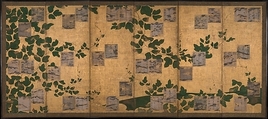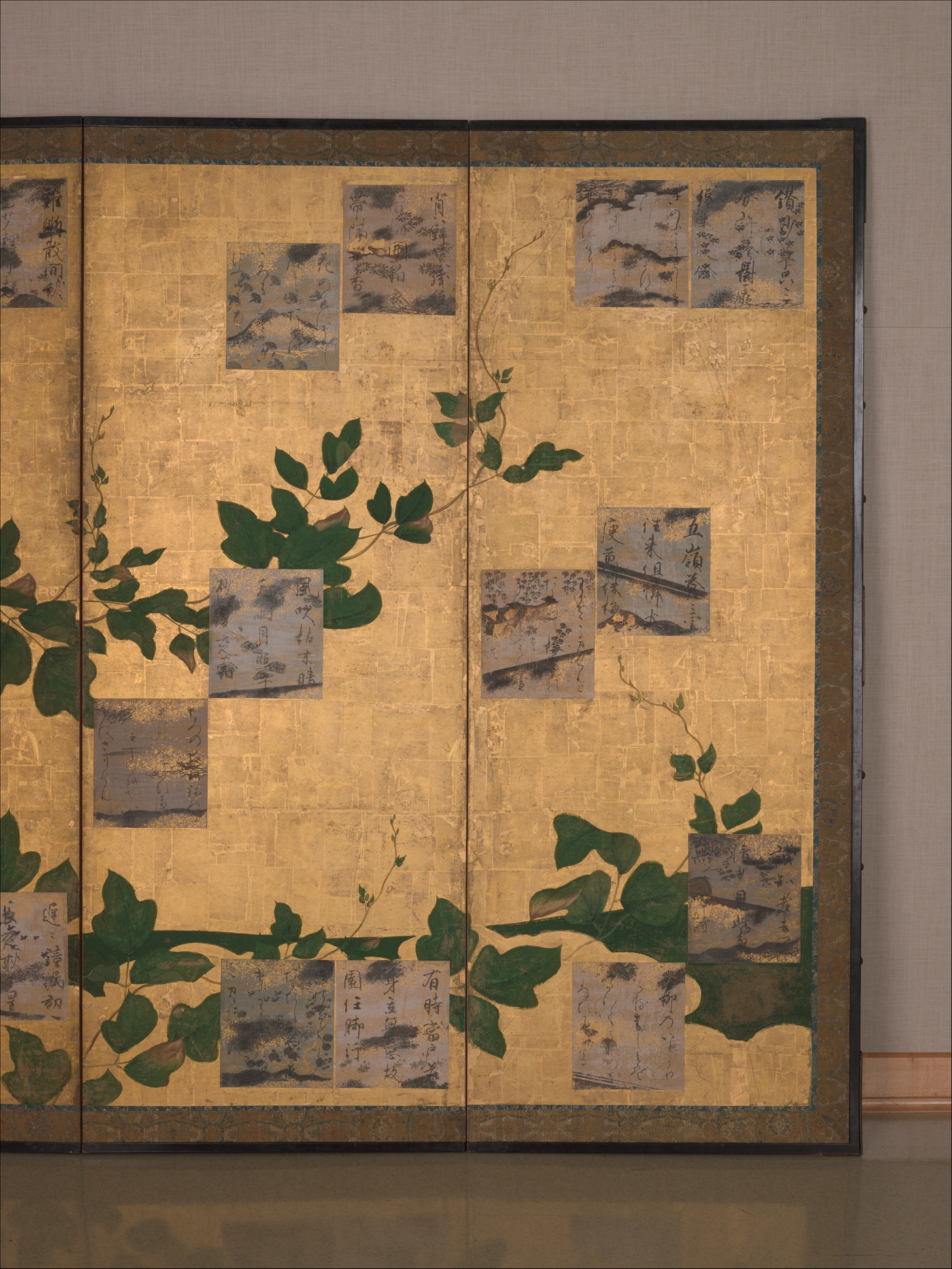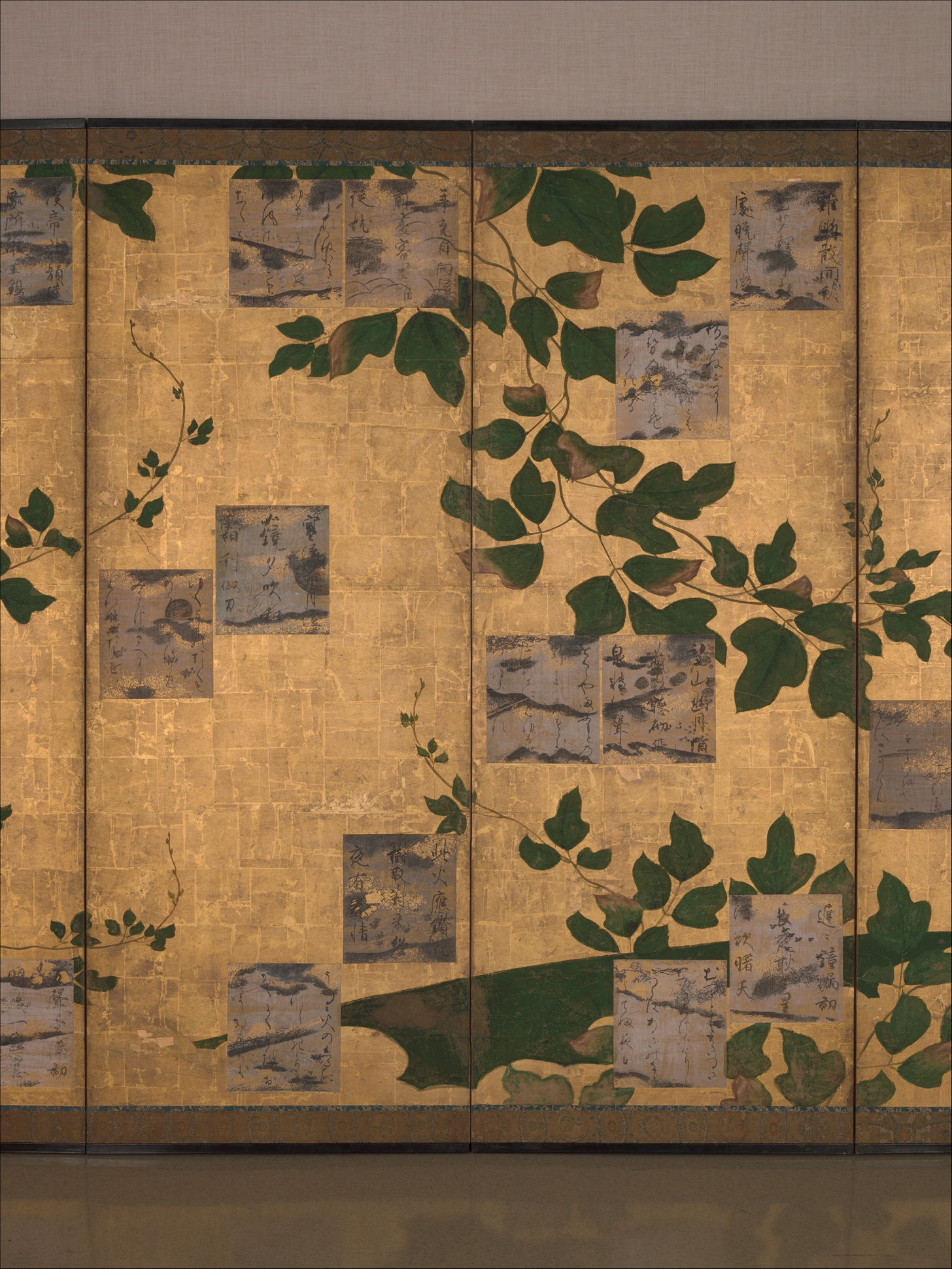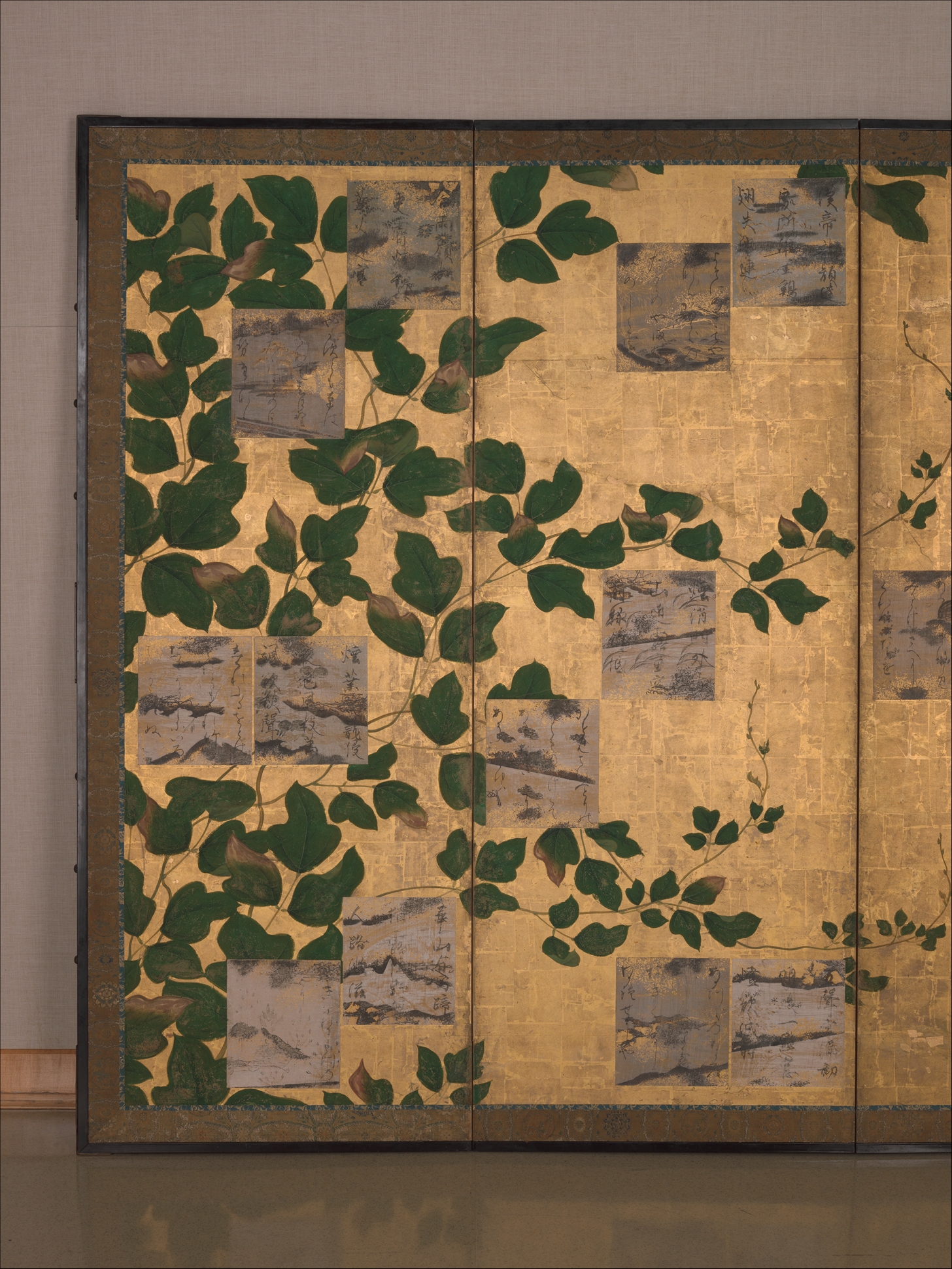Anthology of Japanese and Chinese Poems (Wakan rōeishū) with Underpainting of Arrowroot Vines
Calligrapher Konoe Nobuhiro Japanese
Underpainting attributed to Hasegawa Sōya Japanese
Not on view
Thirty-six poem cards; ink, color, gold, and silver on paper Swaying arrowroot vines (kuzu) in autumnal decline serve as the background for an array of Japanese and Chinese poems inscribed on poem cards (shikishi). In East Asia the arts of poetry, calligraphy, and painting are considered the “three perfections,” and since the ninth century, the Japanese have decorated screens with paintings and poems inscribed in fine calligraphy.
Three pairs of shikishi are pasted on each panel: each pair is inscribed with a couplet from a Chinese poem at the right and a waka (a thirty-one-syllable Japanese-style poem) at the left. The poems share common themes such as the four seasons, bamboo, pines, or clouds. The idiosyncratic style of calligraphy, with hooks at the ends of strokes and the tall, elongated profile of the characters, is attributable to the nobleman-calligrapher Konoe Nobuhiro (1599–1649).
#8890. Painting of Arrowroot Vines with Thirty-six Poems Quoted from the Wakan rōeishū (Anthology of Japanese and Chinese Poems)
Due to rights restrictions, this image cannot be enlarged, viewed at full screen, or downloaded.
This artwork is meant to be viewed from right to left. Scroll left to view more.





